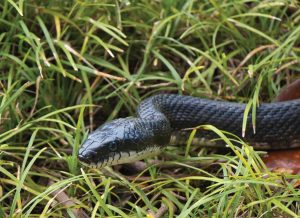Chuck Cockrum vividly remembers the first time he saw an armadillo.
Four years ago, while driving on Interstate 24, about 40 miles south of his Franklin County home, he saw something on the highway shoulder. It was roadkill unlike he had ever seen before.
“What the heck was that?” he remembers wondering aloud. “Did I just see an armadillo?”
His eyes did not deceive him. It was an armadillo. Since then, Cockrum has seen many of the nine-banded variety, long thought to only live in the south, becoming more populous in Illinois.
While most of Illinois’ armadillo sightings have been south of Interstate 64, some have been as far north as Pekin.
David Easton, who owns a Murphysboro-based wildlife control company, says he has trapped nearly 50 armadillos over the past two-and-a-half years.
“There’s always been a belief that armadillos can’t live this far north, but they’re here,” Easton says.
Carly Haywood recently completed a master’s degree in zoology at Southern Illinois University Carbondale. Her work, funded by the Illinois Department of Natural Resources through the Federal Aid in Wildlife Restoration program, included the Southern Illinois Armadillo Project, an effort to track the animals throughout the region.
Haywood says the first report of an armadillo in Illinois was in the late 1970s, but sightings were sporadic until about 10 years ago.
“We’ve started seeing them around more often, and we now have breeding populations of them in southern Illinois,” she says.
Female armadillos – the name is Spanish for “little armored one” – always give birth to four genetically-identical offspring at a time. Combined with an ample supply of their primary diet (insects) and the lack of natural predators, the armadillo population is growing.
“Some studies predict we’re going to see breeding populations of armadillos as far north as Springfield,” Haywood explains.
No one is sure how and why armadillos came to Illinois. Haywood says the animals like to be close to water, finding the rivers and swampy conditions of deep southern Illinois favorable. Mild winters also benefit the insect-foraging creatures. The state’s first armadillos may have come as a stowaway on a livestock truck, crossed a bridge on their own or was freed as a former pet.
Regardless of how they got to the Prairie State, armadillos are here and becoming a more common sight. Experts say they are one that should be admired at a distance. Like many wild creatures, armadillos have been known to carry diseases which could potentially be transmitted to humans. Still, they attract attention when they appear.
“I still shake my head every time I see one,” Easton says.










